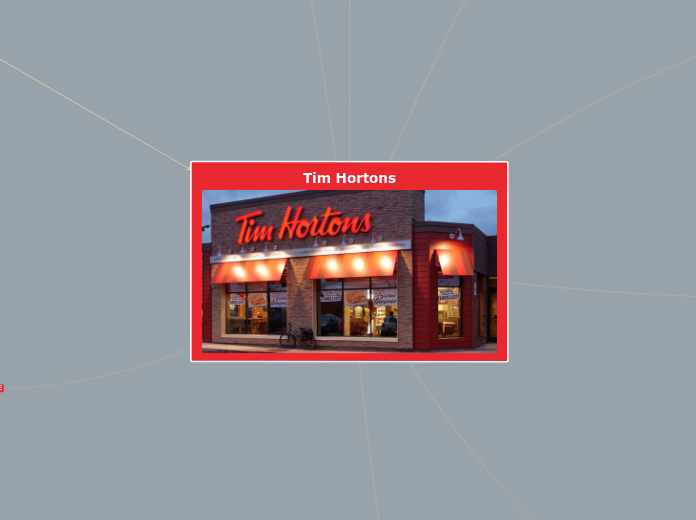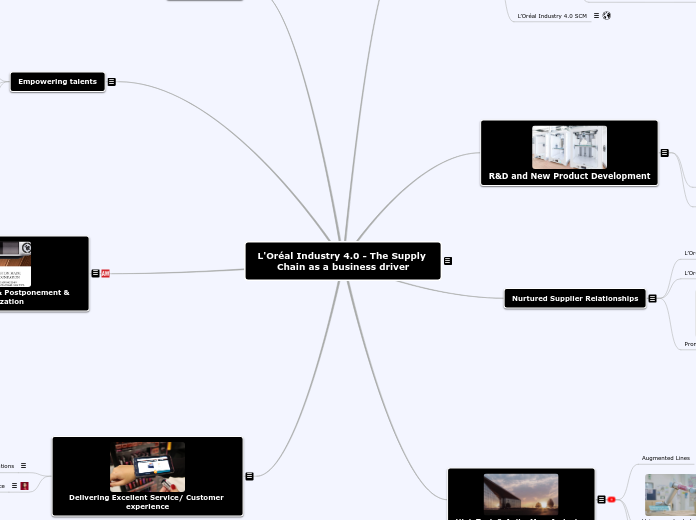Tim Hortons in Spain
It was a great surprise when I moved into my new apartment to find a Tim Hortons a mere ten second walk away from my door, seems like Canada is following me around the world!
Comparing my experience in the Tim Hortons here in Madrid to the ones back home. I've come to realize that many of the store operations are very similar, while some have been optimized to region.
- Tim Hortons approaches the 5's the same around the world. The location and behind the counter tools are always 'Shine', employee and business functions are 'standard', and the locations are always 'set in order'.
- Implemented many of the same actions to address the various principles of waiting lines and such as easy to read menus and the ability for contactless payment. However, I attempted to download the application here in Europe, only to find it was unavailable on the Apple App Store.
- The same people flow (spaghetti diagram). Customers enter and line up on one end. However, once having order they are asked to wait for their food and beverage on the other end of the counter. Just like in Canada, this area is beside where the coffee is made and away from the customers that are sitting down enjoying their meals/beverages. This avoids crowding at key locations in the location, along with reducing motion for Tim Hortons employees, as the cashier can stay at the register, and the customer moves closer to the employee assigned with making drinks and food.
My only complaint about the Tim Hortons here in Canada is that they don't have my favorite donut!
Tim Hortons
Sustainability
Insights:
-In the Cup-to-Tray video we can see Tim Hortons' approach to becoming more of a sustainable company. Upon our visit to Ikea in S4+5, it really raised my awareness of the potential of sustainability in large companies. For example, we saw that Ikea uses 1% of the global wood supply, and in an attempt to tackle this, Ikea created their buy back program for the re-use of their products. Tim Hortons largest source of waste are their coffee cups, in an attempt to mitigate the impact it has on the environment, they created the Cup-to-Tray program that allows their waste to be reused for other business functions.
-Like we saw in Starbucks during our field visit, Tim Hortons has implemented the same strategy of offering discounts to customers that bring their reusable travel mugs in an effort to reduce waste.
-In the Supplier Sustainability video, we see Tim Hortons not only addressing sustainability in their operations, but we also see them specifically using Alignment with their suppliers in the Triple-A Supply Chain. By exchanging information freely with their coffee suppliers, they have allowed their suppliers to be more sustainable. They share the gains of being environmentally friendly, and this has actually induced coffee yield to increase. This creates incentives for their suppliers as the more they are able to produce by being sustainable, the more income they will be able to make.
Travel Mug Discount
Supplier Sustainability
Watch from 1:19 to 2:37
Cup-to-Tray
Watch from 0:09 to 0:29
Queue Management
Queue Management:
-With Amazon Go and their form of tackling key brick-and-mortar pain points: queues, waiting, and paying. Although not as streamlined as Amazon Go, Tim Hortons makes many attempts to address the main pain points of customers in the hospitality industry by implementing similar strategies.
-Although Queue Managment can be considered a part of Customer eXperience, it is one of the most important aspects of Tim Hortons as a hospitality business. Thus why I decided to focus on it independently.
Mobile Orders
Insights:
-Instead of having to address the 8 principles of waiting in lines, why not make queues completely avoidable for customers. This is what Tim Hortons has achieved by implementing a mobile order to pick up service through their mobile application.
-Great example of Tim Hortons having a great ERP system throughout their company. A Customer Portal where an order is made, timing and order fulfillment seamless to ensure the order is ready for pick-up before the customer arrives, financial management to be able to process mobile payments, and allows for a strong CRM by analyzing customer data.
Read First 5 Paragraphs of Link
Queues
Insights:
-Tim Hortons opened express lanes for people who only want a beverage or quick food item. This reduces the general wait time as it allows for customers to be separated by their willingness to wait. This addresses one of the principles of waiting: unfair waits are longer than equitable waits. Thus allowing people who are going to order sit down meals, that takes longer to be prepared, to know that the time they are waiting is fair because it will take just as long for their order to be processed. In addition it reduces annoyance for those that simply are going to order a coffee, as they know their order doesn't take as long.
-Tim Hortons also reduced their menu-size and made the digital screen menus easier to read. This addresses another principle of wait times: anxiety makes wait times seem longer. There are people that become anxious when ordering food as they can't make up their mind, by removing options and making the menu easier to read, it allows them to make their decisions faster, removing anxiety and also allowing them to order quicker
Contactless Payment
Insights:
***Only read paragraph 1 of link***
-As queues are a major pain point for customers, to reduce this Tim Hortons was one of the first Canadian companies to accept contactless payments from credit card. This reduced the time it took for Tim Hortons to process payments (eg. reducing cash, swiping then pin) which allows for the queue to move faster.
Mobile Application Payment
Insights:
-Shortly after the introduction of contactless payment, Tim Hortons introduced the ability to pay on their mobile application. This increased the number of people that could pay quicker as many people still hadn't upgraded to contactless credit cards by 2014. Along with making payments quicker, thus shortening queues, it allowed Tim Hortons to expand on their omnichannel relationship with their consumers. Customers would download the application to pay, but also have access to much more features of Tim Hortons such as: nutrition facts, access to promotions, loyalty program, etc.
Wait-Time
Insights:
-To expand even more on their omnichannel approach, to complement reducing wait times, Tim Hortons introduced a feature on their phone which allowed users to actually know the wait-times at varying Tim Hortons locations (based on app user updates).
-This was a very great operational innovation by Tim Hortons, and in addition in Session 7 we learned about the 8 principles of waiting in lines. One of the was unfilled time seems longer than occupied. This provided an opportunity for those waiting in line to have something to do.
Distribution System Upgrade
Insights:
-In Session 6, we looked into stock management along with inventory. Tim Hortons is planning to open two new warehouses in Canada to help with distribution. This is a step by Tim Hortons to match supply-with-demand as certain regions of Canada did not have the warehouse capacity to meet demands of their franchisees. In the controlling side of this framework, we can see Tim Hortons applying flexible locations, geographical expansion, along with maximizing their efficiency to improve their supply.
-Another insight from this is Management of Customer eXperience. However, in this case the customers aren't those buying coffee and donuts from Tim Hortons, instead the customers are the franchisees. By opening these warehouses, Tim Hortons is able to subdue the angers of the franchisees demand for supplies, creating a better experience for the franchisees.
-A key quote from the article: “This is building for the future, building for the level of growth we expect to have". In Session 6 we touched on forecasting; along with attempting to meet franchise demand, these warehouses are being implemented to also meet the future demand that Tim Hortons believe will have in these regions based off trends.
Only Read First 5 Paragraphs of Link
Total Quality Management
Insights:
-As Tim Hortons has thousands of locations due to being a franchising company, it still keeps many of its processes the same to ensure that it provides the same quality of service to all its customers. In the first video, we see that it is standardized to remove the coffee grounds to avoid having their coffee become bitter. This ensures great tasting coffee and customer satisfaction from the TQM framework. (Coffee Grounds Removal video)
-In the Coffee Brewer Cleaning video, we learn that Tim Hortons cleans each of their coffee brewers up to three times a day. This standardized procedure not only ensures that their coffee tastes great, but also it is an example of Tim Hortons implementing the 5S's (or 6S's). This demonstrates shine, standardization, and sustain, as it demonstrates Tim Hortons focus on keeping work items clean along with making it a habit to maintain. Also helps to avoid defects in DOWNTIME.
-In the image, you can see a time stamp on the coffee brewer, Tim Hortons employees do this to know when a coffee has been there for over 20 minutes. When 20 minutes has passed, they poor out the coffee and brew a new pot. This is a process to ensure quality of the beverages they provide is standardized and sustained throughout all their locations.
All these TQM's focus on the customer, employee involvement, processed centered, and Tim Hortons seeking continuous improvement in the products they offer (kaizan).
Sorry for focusing so much on coffee, but for Tim Hortons its their most iconic product!!!
Coffee Brewer Cleaning
Coffee Grounds Removal
History
Tim Hortons was founded by ice hockey player, Tim Horton, in 1964 in Hamilton, Canada. Soon after it became a franchise, expanding slowly throughout the country. Originally starting by serving its staple products, coffee and donuts, it quickly began to expand its product list to soups and sandwiches; ultimately turning into a store that served full meals to its customers. In 1995, Tim Hortons expanded into the United States, and has since then expanded all across the world, even here in Spain.
Tim Hortons has established itself as a part of Canadian culture through embracing the diversity of our nation and other aspects of Canadian life, such as the love for ice hockey! (view video)
Introduction
Gabriel Ho-Garcia
Operations & Supply Chain Management
MiM F1 - February 2019 Intake
Tim Hortons
Tim Hortons is one of the Canada's most iconic companies. There is approximately 5,000 locations across Canada, and it is normal to see a "Timmie's" every couple minutes during your daily commute. With there being so many Tim Horton's location across such a big and expansive country such as Canada, it is essential to have efficient and optimized processes in supply chain and operations.
I chose Tim Hortons, because I am Canadian, and a cup of coffee from Timmie's is part of everyday life. Every 8 of 10 cups of coffee sold in Canada is a cup of Tim Hortons coffee, putting into perspective just how essential the company is in Canadian life.
The image provided is actually the Tim Hortons in which I spent the majority of my time. It was the Tim Hortons location at my University, Simon Fraser University, in Vancouver. I have spent many hours there, and thanks to their reliable coffee, I managed to survive my bachelors and many other hardships that required my staying awake!
With Tim Hortons being a staple in my life, along with being such an exceptional company, I would love to learn about what goes on behind the scenes to better understand their success. Enjoy the journey!









